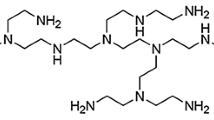Abstract
Enhanced iontophoretic transport using pulsed DC is usually explained by citing the observed decrease in skin resistance caused by an increase in AC pulse frequency at very small currents. Alternately, it has been suggested that the "on-to-off” nature of pulsed DC imparts an "impact energy” to the fluid, thereby increasing transport. This report provides a test of these mechanisms for enhanced delivery via pulsed iontophoresis. The DC resistance of hairless mouse skin during continuous and pulsed DC iontophoresis is measured as a function of time for selected pulse frequencies and duty cycles using current densities ranging from 0.1 to 1.0 mA/cm2. As a test of the impact energy mechanism, the iontophoretic transport of 14C-glucose measured with pulsed DC is compared with similar data obtained previously using continuous DC. It is suggested that pulsed current can yield lower resistance and enhanced drug delivery provided that (a) the "steady-state” current during the "on” phase of the pulse is very small and (b) the frequency is low enough to allow depolarization of the skin during the "off” phase of the pulse. The glucose transport results suggest that the "impact energy” concept does not apply to iontophoresis.
Similar content being viewed by others
REFERENCES
K. Okabe, H. Yamaguchi, and Y. Kawai. New iontophoretic transdermal administration of the beta-blocker metoprolol. J. Control. Release 4:79–85 (1986).
Y. Sun, O. Siddiquie, J. C. Liu, and Y. W. Chien. Transdermal modulated delivery of polypeptides: Effect of DC pulse waveform on enhancement. In Proceedings of the 13th International Symposium on Controlled Release of Bioactive Materials, Norfolk, Virginia, 1986, pp 175–176.
Y. W. Chien, O. Siddiqui, Y. Sun, W. M. Shi, and J. C. Liu. Transdermal iontophoretic delivery of therapeutic peptides/proteins. Ann. N.Y. Acad. Sci. 507:32–51 (1987).
J. C. Liu, Y. Sun, O. Siddiqui, Y. W. Chien, W. Shi, and J. Li. Blood glucose control in diabetic rats by transdermal iontophoretic delivery of insulin. Int. J. Pharm. 44:197–204 (1988).
K. Sudeji, K. Furusawa, H. Inada, K. Katayama, M. Kakemi, and T. Koizumi. Enhanced percutaneous absorption of formoterol fumarate via pulsed iontophoresis. II. Effect of polarity, pulse frequency and duty. Yakugaku Zasshi 109:771–777 (1989).
T. Yamamoto and Y. Yamamoto. Electrical properties of the epidermal stratum corneum. Med. Biol. Eng. Comp. 14:151–158 (1976).
R. R. Burnette and T. M. Bagniefski. Influence of constant current iontophoresis on the impedance and passive Na+ permeability of excised nude mouse skin. J. Pharm. Sci. 77:492–497 (1988).
M. J. Pikal and S. Shah. Transport mechanisms in iontophoresis. II. Electroosmotic flow and transference number measurements for hairless mouse skin. Pharm. Res. 7:213–221 (1990).
M. J. Pikal and S. Shah. Transport mechanisms in iontophoresis. III. An experimental study of the contributions of electroosmotic flow and permeability change in transport of low and high molecular weight solutes. Pharm. Res. 7:222–229 (1990).
V. Srinivasan, W. I. Higuchi, S. M. Sims, A. H. Ghanem, and C. R. Behl. Transdermal iontophoretic drug deliver-mechanistic analysis and application to polypeptide delivery. J. Pharm. Sci. 78:370–375 (1989).
T. Bagniefski and R. R. Burnette. A comparison of pulsed and continuous current iontophoresis. J. Control. Release 11:113–112 (1990).
Author information
Authors and Affiliations
Rights and permissions
About this article
Cite this article
Pikal, M.J., Shah, S. Study of the Mechanisms of Flux Enhancement Through Hairless Mouse Skin by Pulsed DC Iontophoresis. Pharm Res 8, 365–369 (1991). https://doi.org/10.1023/A:1015801817259
Issue Date:
DOI: https://doi.org/10.1023/A:1015801817259



